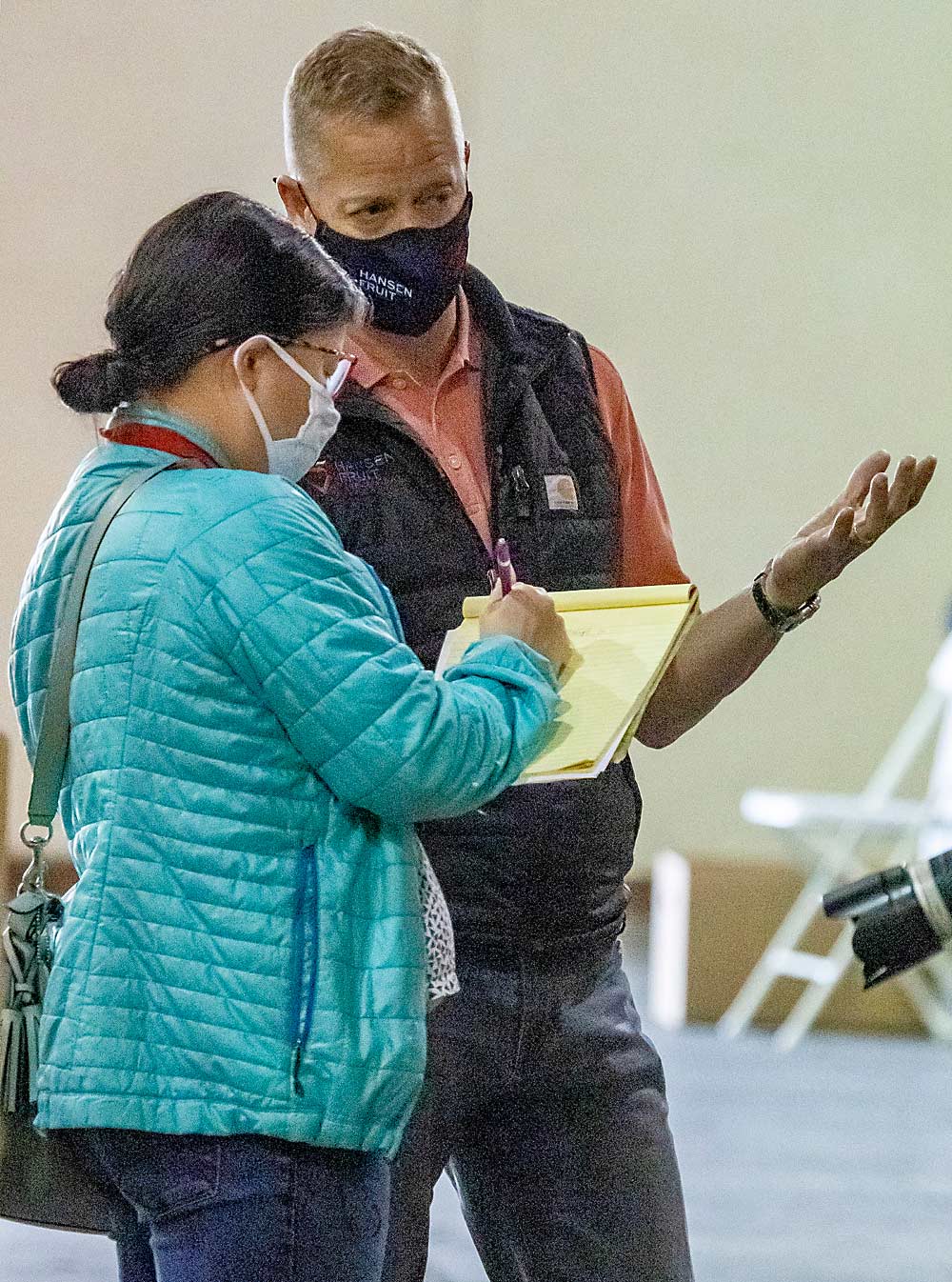No one really wants to reflect on the early months of the pandemic a year ago, when growers and packers faced a deadly viral threat, PPE shortages, constantly changing guidance and regulations as the world learned more about the coronavirus — and media scrutiny along the way. But company leaders eager to put the past year in the rearview mirror may miss an opportunity to learn how to better prepare their farms and businesses for the next crisis.
That’s the message from Amy Philpott, a crisis communications specialist at Watson Green LLC, a Washington, D.C.-based food and agriculture-focused consulting group. Philpott has helped produce companies develop recall plans and weather many other crises over her career. She recently spoke with Good Fruit Grower about the lessons growers should learn from 2020. This conversation has been condensed and edited.
Good Fruit Grower: We all hope to never contend with a pandemic like this again, so what do you see as the lessons from 2020 as far as crisis management?

Amy Philpott: 2020 was unique not just because of the pandemic, as far as crisis communications is concerned. We had social injustice and the economic crisis and regulatory instability. Food companies and growers have been dealing with not just the pandemic but a year of crisis on top of crisis on top of crisis. I think the produce industry has done a tremendous job protecting workers under extremely challenging circumstances. It was challenging, and it wasn’t without its lessons.
If we’ve learned anything from this, it’s that regulatory compliance is not enough. Especially in the beginning of the pandemic, when growers were really struggling just to keep up on the latest regulations, an incredible amount of resources went into just staying on top of the changes — and other things, like communication, fell by the wayside.
As food companies, we tend to think, “If I comply with the regulations, I’m good.” But in a crisis, you have to have trust among your various stakeholders. We know we need the trust of our customers, but we need to go way beyond that. It’s the trust of the community, the consumers and your employees. Especially your employees.

How do companies build that trust with their employees in the midst of a crisis?
You do that through communication. 2020 showed companies that they have to put the “relations” back in employee relations. We learned very quickly that not only is regulatory compliance not enough, but simply engaging in one-way communication with our employees is not enough. It has to be two-way communication.
Early on in the pandemic, I would ask companies, “Have you told your employees why they have to wear masks now or why you put these social distancing markings on the floor?” And they said, “No, they are getting that information from the news.” The assumption was the employees knew they weren’t being tested because tests weren’t available. That masks weren’t being provided because they were back-ordered everywhere.
That context was not being communicated to employees. As a result, employees were making assumptions that the company doesn’t care about us or they would be telling us these things, offering us these things.
We naturally think about being transparent about what we know, but it goes for what we don’t know, too. Giving a reason why you can’t share information, such as employee privacy, is so important in building trust. Otherwise, even if there is no ill intent, the default assumption is that something is being hidden.
I’ve always said employee communications is by far one of the most challenging types of communication, and more so in a crisis. It’s important to find some way to communicate with them in a two-way fashion. Anonymous comment cards in the lunchroom or a private Facebook page, for example. It’s important to understand how they are comfortable receiving communication. For smaller growers, a morning “tag-up” might be the most effective. A couple minutes before the crew starts, the crew lead gives them the message of the day — reminding everyone that masks go over your nose and here’s why — and then asks for questions. It’s extremely effective in making employees feel like the company cares about them, even if there are no questions. And when their spouse or pastor or even a reporter asks them what the company is doing to keep them safe, they can say, “We have a meeting every morning.” It creates a culture of employee relations.
What can companies do to be better prepared in the future?
By far, the companies I work with that put together a crisis communication plan before the pandemic did better than those that didn’t have one in place. It wasn’t because we had a plan to address the pandemic — no one had that — but what we had in place was a response framework that included who was going to be on the team, their role and responsibilities. We had the processes in place to communicate internally, we had a list of stakeholders we had to communicate with. No one had statements for press releases that addressed a pandemic, but there was a plan of who would write, approve and distribute them. It certainly wasn’t easy or without challenges, but the companies that had the framework set up in advance responded more efficiently and effectively. Planning and preparing works.
What should people consider when they start developing a crisis communication plan?
Keep it simple; all you need is a response framework, and then you need to test it. There’s a huge gap between those who have practiced and tested their plan and those that have a plan on the shelf, but only two people at the company have ever read it. I think it’s important to realize that it needs to be thorough and well thought out, but it doesn’t need to be complicated. In fact, the better ones are not complicated.
When you are in the middle of a crisis, it’s hard to have perspective. Even in situations where it would be a win to get out ahead of a story and contact a reporter, companies are scared. If you are talking to a reporter, it should be to your benefit; it should be to share your point of view, so you are not drowned out by people talking for you or about you. I understand the reticence, but evaluate each situation and, whenever possible, communicate the company’s position. That process should be in your plan, because otherwise, you become an unwilling passenger on a runaway van.
What do you see when you look forward?
If 2019 was normal, we are never going back. I think there is still a lot to be prepared for, and now is the time to take stock and look at what is ahead, and look at what was learned in 2020 and apply those lessons.
The first word we all reach for when we talk about 2020 is “unprecedented.” But in my experience, 2020 just reaffirmed the fundamental principles of crisis communication: The ones at the top would be trust, empathy, honesty and transparency.
Then, timeliness: Being quick with accurate information is another principle I think growers and the food industry struggle with. If I get a phone call from someone who says, “A week ago this happened, can you help us?” — it’s too late to get ahead of the story.
2020 in its entirety affirmed that people should always be first in any crisis; it’s the human interaction that is critical in a crisis. •
—by Kate Prengaman







Leave A Comment